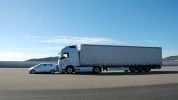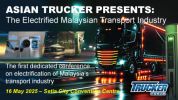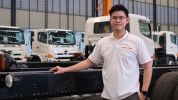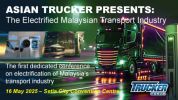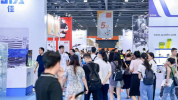Face to face with Hildegard Müller
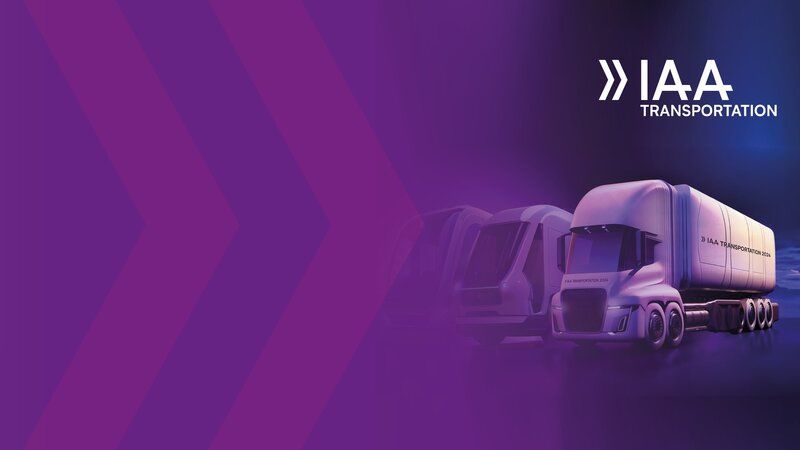
Ahead of the IAA Transportation, members of the International Truck of the Year jury were granted an exclusive interview with Hildegard Müller, president of the Verbandes der Automobilindustrie (VDA). She says this year’s exhibition will be more global than ever before, and she believes that the transport industry still faces quite some challenges when it comes to carbon neutrality.
Our first question concerns the IAA Transportation. How would you describe the sentiment of the truck industry as we approach the fair? Would you say that, as in the past, the exhibition is expected to be the ideal showcase for the latest advancements and the place to be?
Hildegard Müller: We have great expectations within the trucking industry. Exhibitors at the 2024 IAA Transportation are building on the success of 2022 edition, which we know set a high benchmark.
This year’s fair promises to surpass expectations. We have an increasingly international presence, which highlights the global importance of the IAA. Let me point out some things first. We have over 80 exhibitors participating in the press day. They will present innovative products and world premieres, indicating vibrant innovation and the readiness to tackle future challenges.
Visitors will be able to see anything and everything from new electric vehicles up to hydrogen trucks.
We also have some new attractions, such as a family weekend and a trucker festival, which highlights the importance of drivers and also their contribution to the industry. We have a lot of events and activities planned for this weekend. There’s a truck racing paddock, a driving school, and an outdoor stage with concerts, for instance.
This year’s IAA will offer the press conferences, then the very important B2B exchange, and, at the end, the driver and family weekend.
What differences do you see between this year’s IAA Transportation and the 2022 edition?
The 2022 IAA Transportation was first after the Covid pandemic, and its impact – especially in terms of international participation – could be felt on the fair. We had to skip the 2020 event because of Covid.
In 2024, we will have continued growth and a stronger international presence than ever before. Over 70 percent of our exhibitors come from abroad. The main countries from which they’re coming are China, Turkey and Italy. This means even more global interactions and much-needed exchanges for visitors.
We already have more exhibitors than the final number in 2022, which is really great. We are aiming for more than 1 500 exhibitors, and we’re already close to achieving that goal. This is a strong sign that the industry is ready to take on the challenges of the future.
Then, as I mentioned earlier, we have the driver and family weekend. For us, it's very important to highlight the role of the drivers.
What are the main highlights of this year’s IAA? edition? Will e-mobility come to the fore once again?
Yes. E-mobility will be showcased. We will also show you a lot of innovations in charging infrastructure. I think it's very important to have this charging infrastructure right now. Hydrogen will also be a point of focus, of course, which brings to mind the question of the infrastructure development for hydrogen technologies.
The IAA will also showcase autonomous driving, where we are standing in terms of the vehicle technology and also applications and pilot projects in the logistics sector.
Other points of focus will be last-mile transport and in big cities and advanced connectivity services. Digitization and technology advancements in AI will also be featured.
Given the many advances in technology, we expect that the test drives offered at the IAA will prove very popular. A variety of vehicles will be available for testing – from diesel-powered vehicles boasting the latest Euro standards to gas-powered vehicles and electric trucks. We had about 7 500 test drives in 2022, and we have high demand for the test drives in 2024 (many of which are fully booked). So, we will try to offer additional test drives.
In just a few years, the truck industry has delivered heavy-duty battery electric vehicles (BEVs) with a range of around 500 km. How has this miracle been achieved?
Due to the efforts and investments of all the companies in our sector, we have made massive progress. From 2024 to 2028, manufacturers and suppliers to the German automotive industry will invest around €280 billion in research and development worldwide. The focus of the investments is on transformation, especially electromobility including battery technology, autonomous driving and digitalization. In addition to the R&D investments, there will be another around €130 billion from 2024 to 2028, which will flow from the German automotive industry worldwide into, among other things, the construction of new factories and the conversion of plants and their equipment.
That's a huge investment. It's a message to the customers and the market and also to the politicians that we want to fulfil the goals that are required.
The investments are also an expression of our will to remain internationally competitive. The German automotive industry wants to continue to build the most climate-friendly, safest, most efficient and most modern cars in the world.
But we need competition. This spiral of protectionism is a huge problem for us. The German automotive industry is in favour of free and fair trade. As a matter of principle, any protectionist measure, including additional tariffs as well as unjustified and market-distorting subsidies, restricts free trade and harbours the risk of trade conflicts that are ultimately detrimental to all sides.
We also need the right framework conditions. We have a lot of companies that say, “I want to buy these new vehicles, but the grid operator in my town won't accept my charging needs”. So, we want to discuss the whole ecosystem and what is necessary. We need to discuss these issues with politicians, with companies, and with investors.
What's the role of component suppliers in this transformation? Some of them are really huge. And so they are supplier partners. Did they play a significant role in this miracle?
I think the whole supply chain is important. The German automotive supplier industry employs around 300 000 people. We have a lot of so-called German industrial Mittelstand (SMEs). They are making huge investments from tier one up to tier two and so on. Including the supplier industry and start-ups in the B2B dialogue within the transportation industry is very important. We also want to build the whole ecosystem in producing vehicles.
Nobody has a crystal ball to see what is happening in the future. But how do you see the energy transition unfolding in the transport sector? Do you see a steady increase in low volumes, followed by a surge in demand for zero-emission trucks in the European and European level? Do you see different technological solutions, such as fuel cell vehicles, electric vehicles, or hydrogen internal combustion engine vehicles, being used for various transport tasks?
We need to be open to using the best technology for each application, and we need to deliver carbon-neutral transport products all over the world. And there are different needs in different markets. Here in Europe, we are talking to the politicians to find the best carbon-neutral solutions – because we need to focus on an entire ecosystem and not just an individual product.
It’s not our responsibility to build power grids. We can build charging points. And we are very much involved in this as an industry. Some companies are investing in sustainable, suitable fast charging networks, for example Milence, a joint venture of Daimler Truck, the Traton group and the Volvo Group. But we also need European membership countries to invest in the charging infrastructure and power grids. Without this entire ecosystem in place, we cannot build on the success of the fantastic products our industry has created.
Continuing on this theme, we've seen – in the last few weeks during press events – that the industry is ready to deliver, top notch, electric trucks. But the public charging infrastructure for electric trucks still needs to catch up.
Yes, there is absolutely a need for a charging infrastructure. Otherwise, we can't reach our targets. A rapid Europe-wide expansion of the hydrogen refuelling infrastructure is also necessary. By 2030, around 2 000 truck-suitable hydrogen refuelling stations with a capacity of about two tons of H2 per day will be needed in Europe. About 15 to 20 percent of these hydrogen refuelling stations are needed in Germany (roughly 300 to 400).
But, as I’ve already mentioned, I’m sorry to say that – without the power grids – we won't succeed. This needs to be discussed within every member state. I think, at the end of the day, the new EU Commission must be more ambitious with the Alternative Fuel Infrastructure Regulation (AFIR). We need to achieve much more.
- VDA means “German Association of the Automotive Industry” in English.
